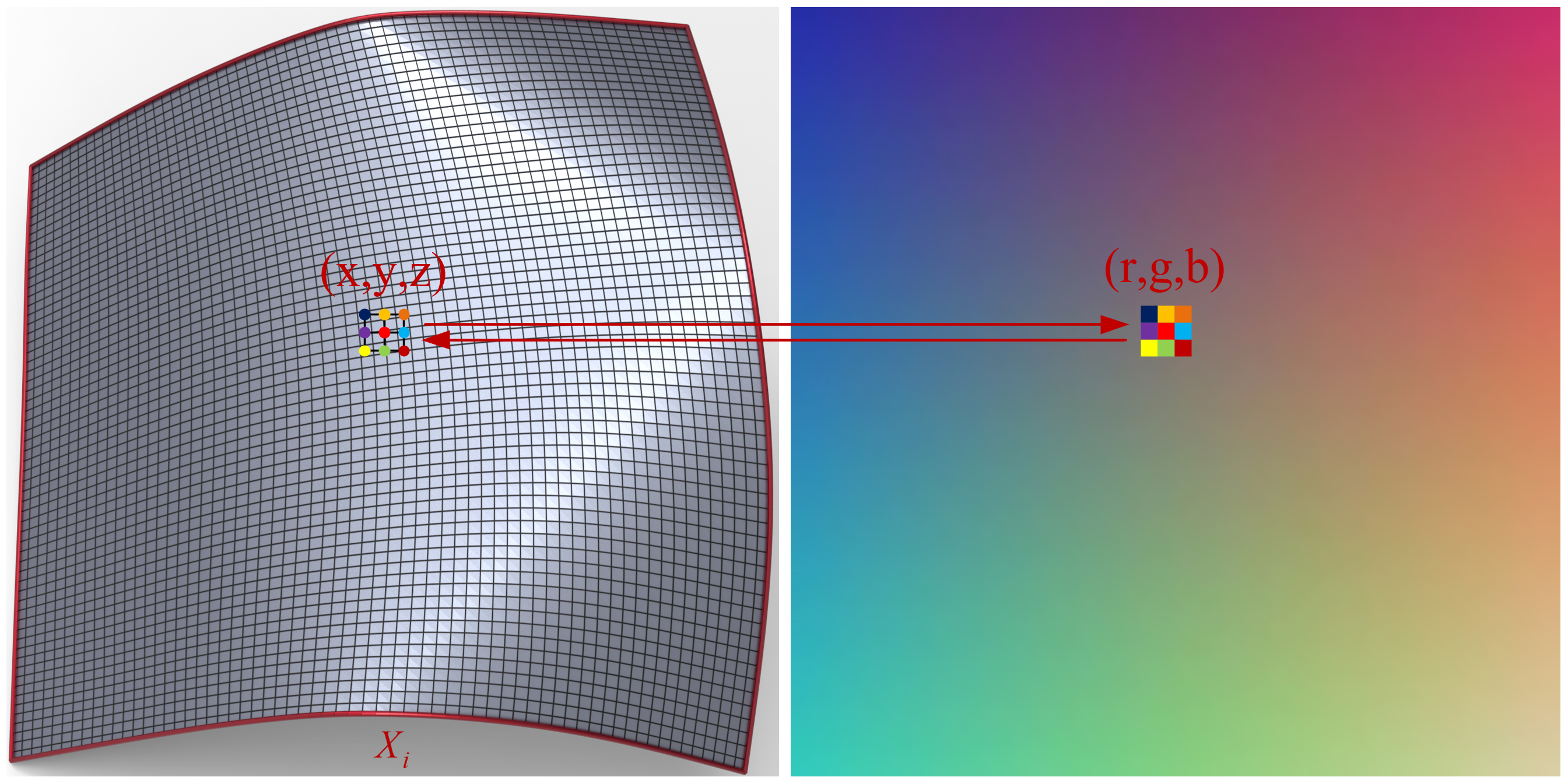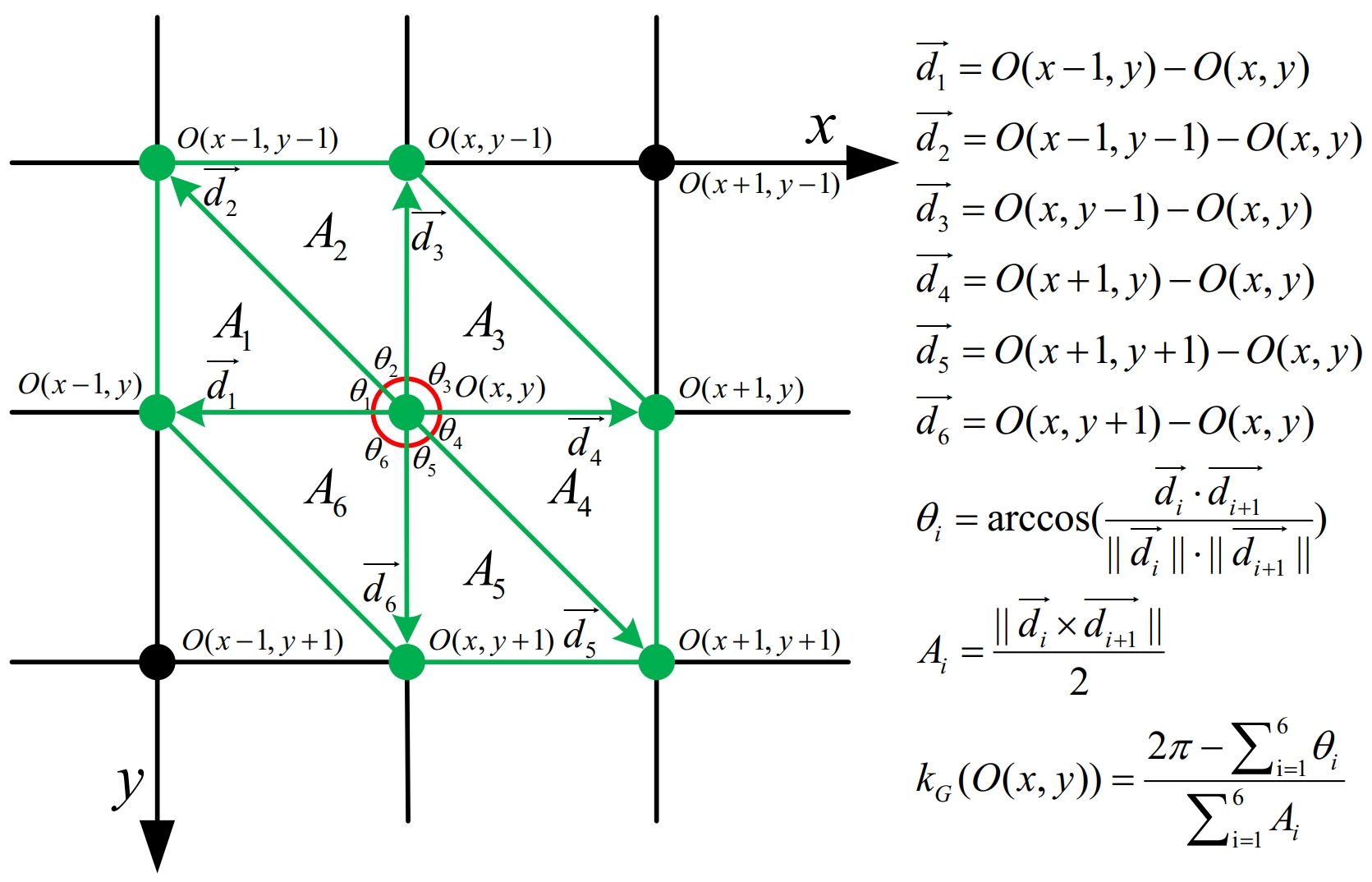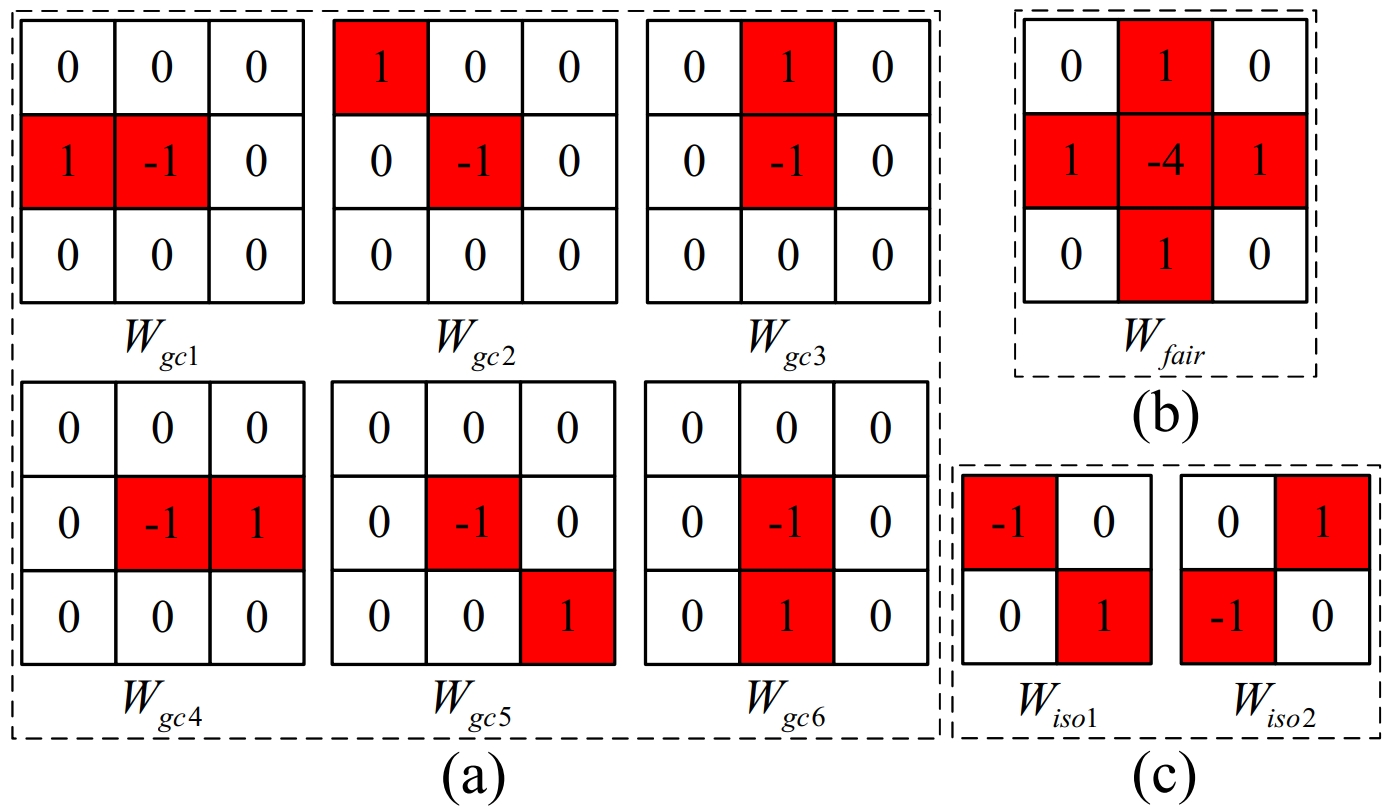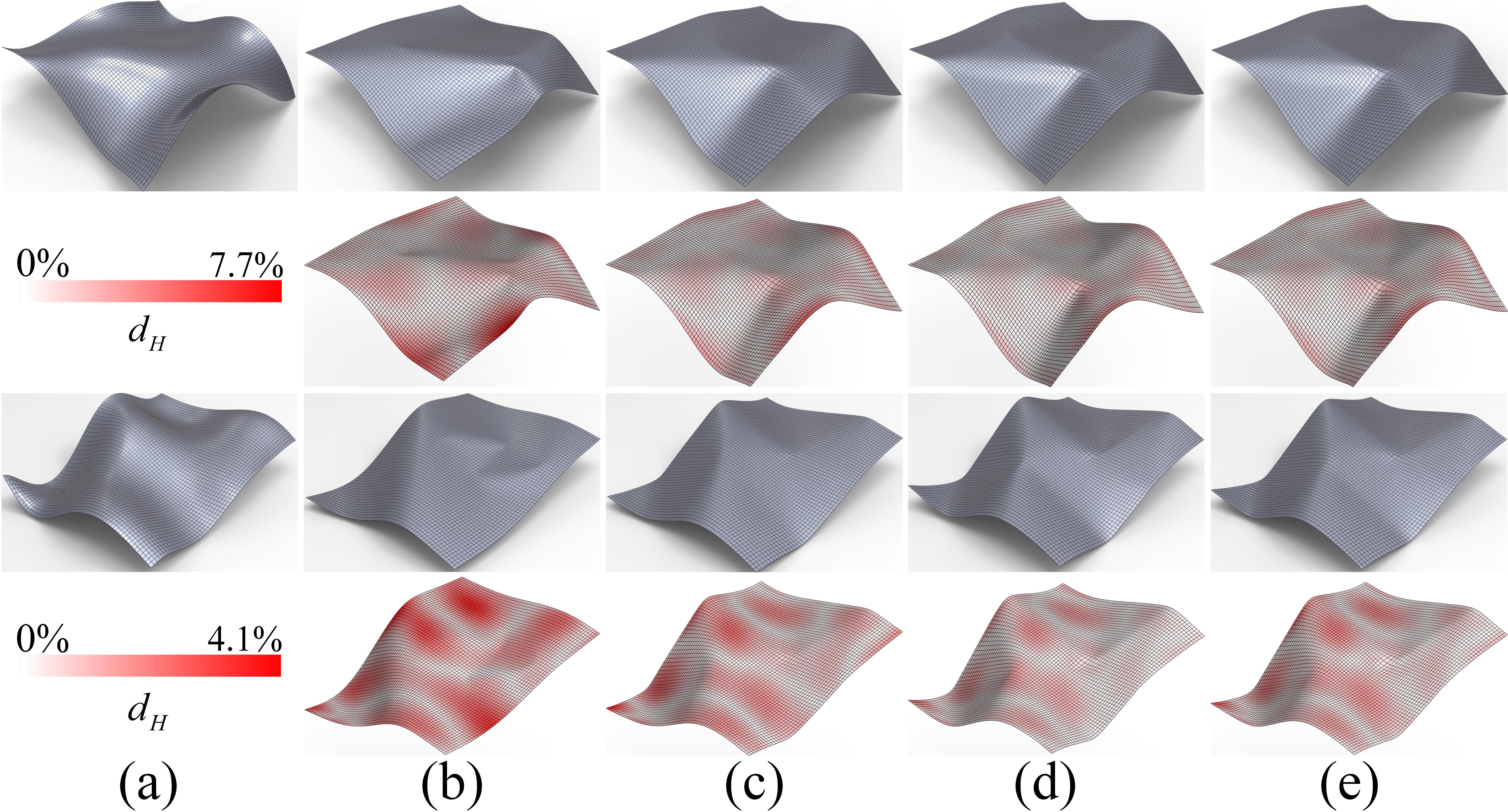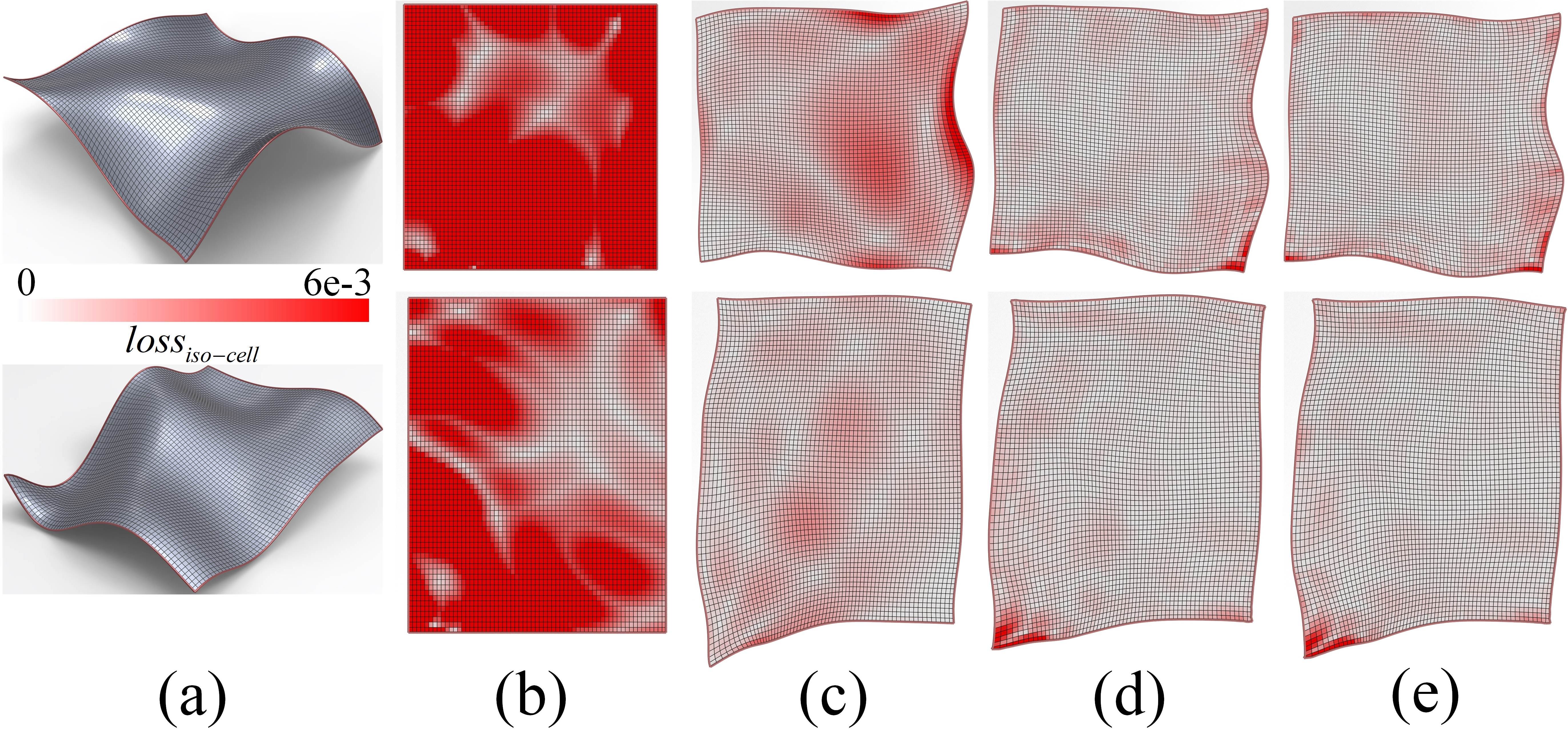Abstract

In the context of surface representations, we find a natural structural similarity between grid surface and image data. Motivated by this inspiration, we propose a novel approach: encoding grid surfaces as geometric images and using image processing methods to address surface optimization-related problems. As a result, we have created the first dataset for grid surface optimization and devised a learning-based grid surface optimization network specifically tailored to geometric images, addressing the surface optimization problem through a data-driven learning of geometric constraints paradigm. We conduct extensive experiments on developable surface optimization, surface flattening, and surface denoising tasks using the designed network and datasets. The results demonstrate that our proposed method not only addresses the surface optimization problem better than traditional numerical optimization methods, especially for complex surfaces, but also boosts the optimization speed by multiple orders of magnitude. This pioneering study successfully applies deep learning methods to the field of surface optimization and provides a new solution paradigm for similar tasks, which will provide inspiration and guidance for future developments in the field of discrete surface optimization.
